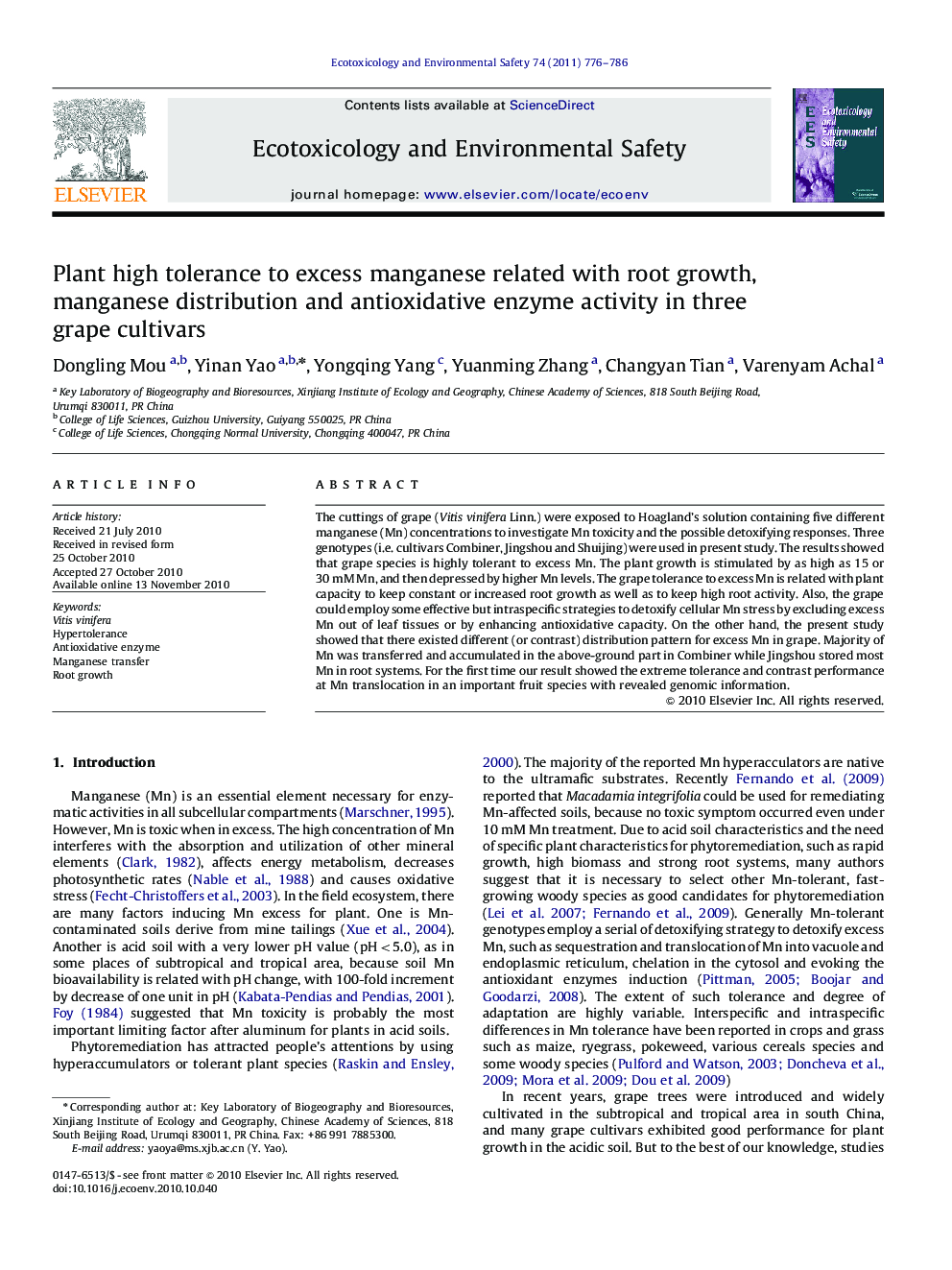| Article ID | Journal | Published Year | Pages | File Type |
|---|---|---|---|---|
| 4421458 | Ecotoxicology and Environmental Safety | 2011 | 11 Pages |
The cuttings of grape (Vitis vinifera Linn.) were exposed to Hoagland’s solution containing five different manganese (Mn) concentrations to investigate Mn toxicity and the possible detoxifying responses. Three genotypes (i.e. cultivars Combiner, Jingshou and Shuijing) were used in present study. The results showed that grape species is highly tolerant to excess Mn. The plant growth is stimulated by as high as 15 or 30 mM Mn, and then depressed by higher Mn levels. The grape tolerance to excess Mn is related with plant capacity to keep constant or increased root growth as well as to keep high root activity. Also, the grape could employ some effective but intraspecific strategies to detoxify cellular Mn stress by excluding excess Mn out of leaf tissues or by enhancing antioxidative capacity. On the other hand, the present study showed that there existed different (or contrast) distribution pattern for excess Mn in grape. Majority of Mn was transferred and accumulated in the above-ground part in Combiner while Jingshou stored most Mn in root systems. For the first time our result showed the extreme tolerance and contrast performance at Mn translocation in an important fruit species with revealed genomic information.
